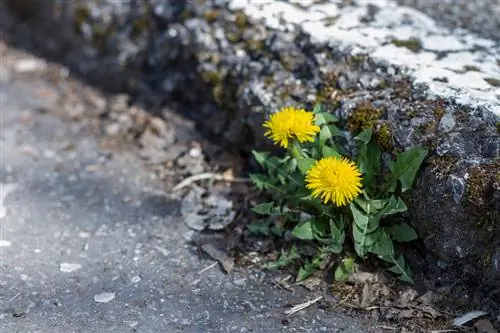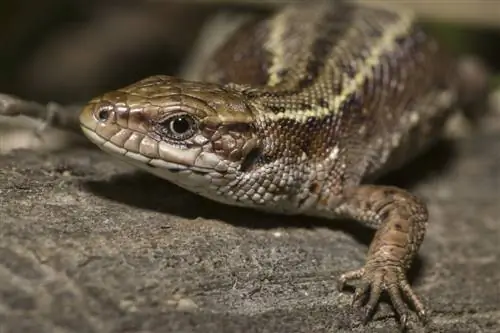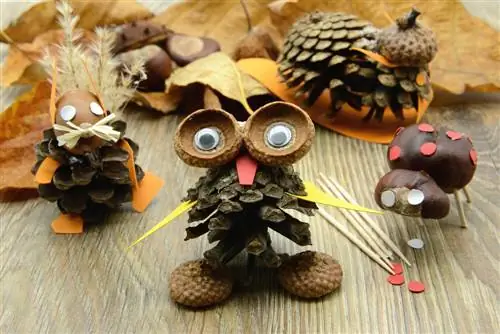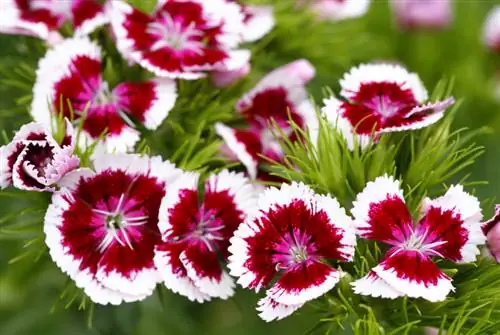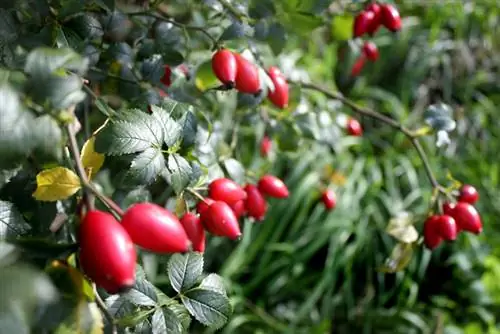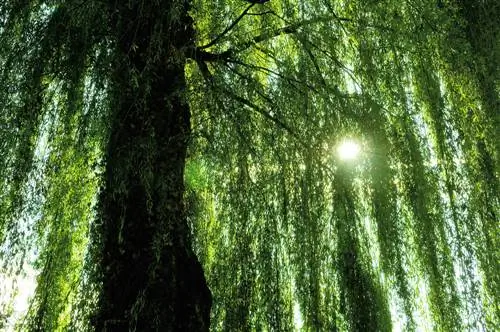- Author admin [email protected].
- Public 2023-12-16 16:46.
- Last modified 2025-06-01 06:02.
A strong and long taproot is what makes it difficult for gardeners to remove dandelions in one fell swoop. However, this plant is not only known as a weed, but also a true medicinal plant. Here is an overview of their features and a detailed description!
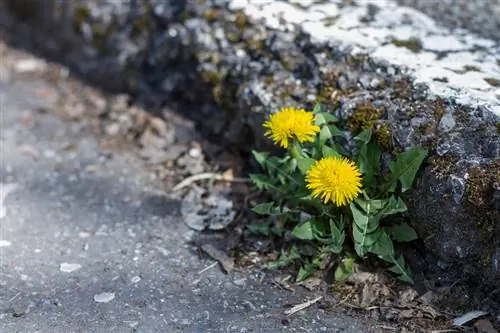
What are the characteristics of the dandelion?
The dandelion (Taraxacum officinale) is a perennial plant from the daisy family. It grows upright and reaches a size of 10-50 cm. Characteristic are the lanceolate, toothed leaves, the yellow basket flowers and the black capsule-shaped seeds, which are known as “dandelions”. It has laxative and diuretic effects.
In short: The characteristics of the dandelion
- Plant family and genus: daisy family, dandelion family
- Botanical name: Taraxacum officinale
- Origin: Northern Hemisphere
- Occurrence: meadows, fields, open forests
- Size: 10 to 50 cm
- Growth: upright, herbaceous
- Leaves: Rosette, lanceolate, coarsely toothed
- Flowering period: April to June
- Flower: daisy flower, yellow
- Fruit: Achene fruits, whitish
- Seeds: capsule-shaped, black
- Location: Sun to partial shade
- Effect: laxative, diuretic
Other names and location claims
You may also know the dandelion under the names dog flower, cow flower, milk stick, chain flower, piss flower, dandelion, buttercup, sun vortex or monk's head. This annual to perennial plant, of which there are over 400 species, has many names.
The dandelion is often found on fallow land. But it also likes to colonize meadows, roadsides, fields, sparse forests and gardens. It even appears now and then between narrow stone joints and in masonry.
A closer look at the dandelion: structure and appearance
Anyone who has gotten to know the dandelion will quickly recognize it. It has a herbaceous habit and can reach heights of up to 50 cm. A hollow stem filled with a white milky sap shoots up in spring. A rosette of leaves forms at the bottom. The individual leaves are up to 30 cm long, are lanceolate and coarsely toothed at the edge.
Bright yellow flowers
The yellow flowers, which appear from the beginning of April, are extremely striking. They are located terminally on the smooth stems:
- Ranged flowers, no tubular flowers
- 200 to 300 ray flowers per inflorescence
- basket-shaped
- rich pollen and nectar supply (interesting for beekeepers)
- hermaphrodite
Dandelions - tons of seeds
After the flowers, the stage is clear for the dandelion seed heads. They are also unmistakable and every child knows how to name them. They are commonly referred to as dandelions. Each seed head looks like a fluffy ball. It is a radiating crown of hair made up of numerous seeds.
The individual seeds are equipped with small flying umbrellas. This means they are easily spread by the wind. Each seed is black and elongated in shape. Self-seeding is not an exception, but rather the rule.
Poisonous properties?
What is the white secretion that is in the stems? Attention: It is the so-called milky juice. It contains an irritating to slightly toxic active ingredient called taraxacin. It can cause irritation and, if consumed, can cause liver problems and nausea.
Tip
If you want to use dandelions for salads etc., it's better to stay away from the older leaves and stems and instead collect the young, tender leaves.

